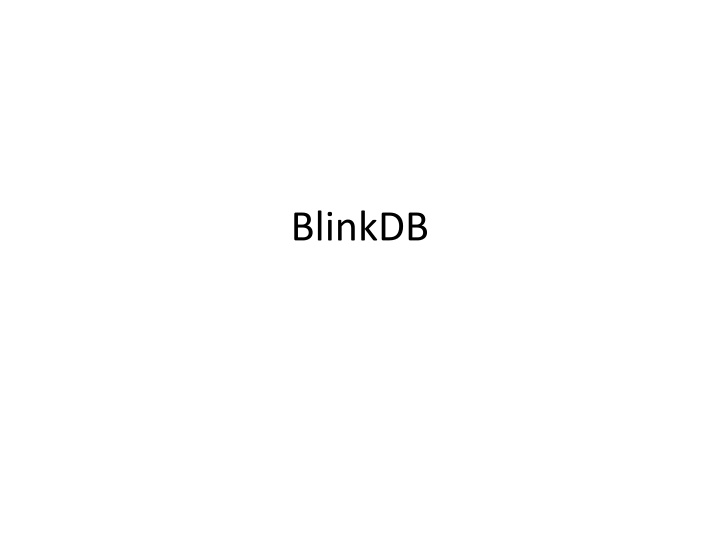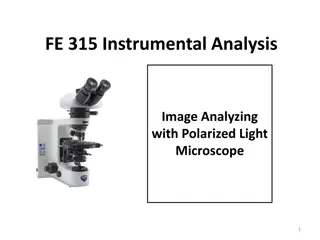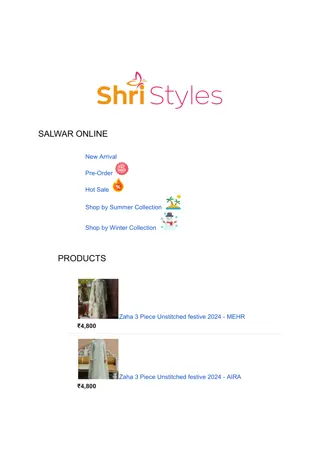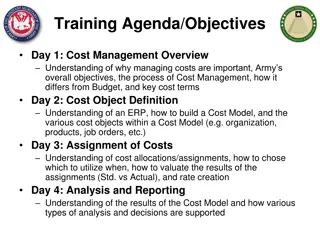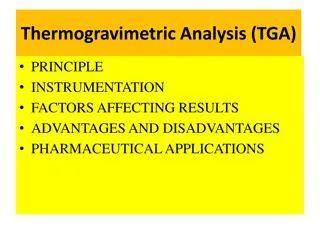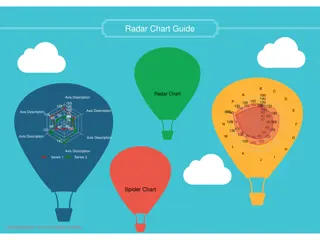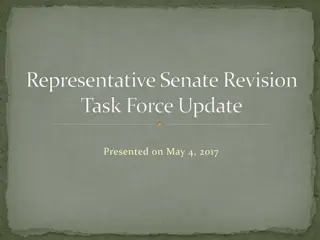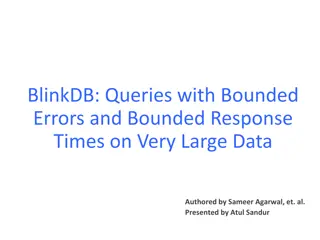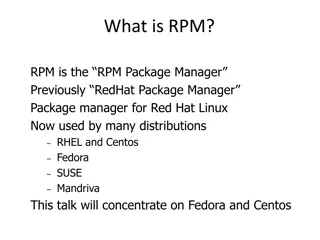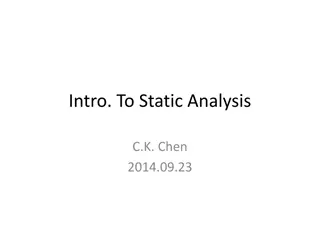Analysis of Drawbacks in BlinkDB System
BlinkDB is a system that focuses on organizing sampling around query column sets and determining query classes with the best efficiency. However, potential failures lie in unstable QCSes, high rare subgroup counts, and challenging dimensionality. Drawbacks include unclear parameter tuning, limited optimal solutions, and the system's inability to handle joins and nesting in queries.
Download Presentation

Please find below an Image/Link to download the presentation.
The content on the website is provided AS IS for your information and personal use only. It may not be sold, licensed, or shared on other websites without obtaining consent from the author.If you encounter any issues during the download, it is possible that the publisher has removed the file from their server.
You are allowed to download the files provided on this website for personal or commercial use, subject to the condition that they are used lawfully. All files are the property of their respective owners.
The content on the website is provided AS IS for your information and personal use only. It may not be sold, licensed, or shared on other websites without obtaining consent from the author.
E N D
Presentation Transcript
BlinkDB: My main takeaways IDEA 1: Organize sampling around query column sets (a) A small set may cover all queries From workloads (b) MILP formulation which picks these column sets IDEA 2: Determine on the fly, the qcs that gives the best bang for the buck Cute idea of selectivity number of rows selected divided by the number of rows read Both of these are nice, novel ideas.
Where could the BlinkDB approach fail? QCSes are not stable # of rare subgroups are high, dimensionality bad For example, if three groups have dimensionality 10000 each, the stratified sample of the cross- product could be GIGANTIC Aqua would also fail
What are the drawbacks of the BlinkDB system? Let s talk about Optimization Techniques Query Class Repeated Queries
What are the drawbacks of the BlinkDB system: Optimization Techniques?
What are the drawbacks of the BlinkDB system: Optimization Techniques? Not clear how to tune various parameters: K, M whether the MILP is indeed optimal if techniques will apply to other workloads or case studies (two datasets is very limited) Could have done bootstrapping
What are the drawbacks of the BlinkDB system: Query Classes?
What are the drawbacks of the BlinkDB system: Query Classes? Does not handle joins/nesting Very simple queries
Other Drawbacks A QCS either receives K or none at all. Is this wise? Should depend on variance, distribution If all values of cost of sale is 1 for this product, why keep a sample of K, 1 would suffice. If variance is small, a smaller sample may suffice Paper claims partial covering is OK if need be. Is that true? Partial covering may lead to a biased sample May completely miss some groups
Aqua vs. BlinkDB Very similar ideas for offline precomputed samples Aqua Is query agnostic, will take full collection of group- by columns to construct stratified sample May be too much Broader class of queries General enough to apply to joins (foreign key)
Alternatives for speeding up latency Offline Approximate Query Processing Better or more hardware Leveraging main memory (e.g., spark) Parallelism (e.g., dremel) Data Cube Materialization (NEXT) Online Approximate Query Processing (NEXT)
OLAP From the 90s Analytics: Business Intelligence Without aggregates, the underlying data can be represented as a snowflake schema The key idea of a data cube to materialize and store aggregates for this snowflake schema
Two representations Normalized Representation Fact tables and dimension tables Denormalized representation One row per transaction
A Sample Data Cube Total annual sales of TV in U.S.A. Date 3Qtr 2Qtr 1Qtr sum 4Qtr TV U.S.A PC VCR Country sum Canada Mexico sum All this data is completely precomputed before any queries arrive!
Data Cube Materialization: Idea from the 90s Sales volume as a function of product, month, and region Also called Data Warehousing Product Month
The curse of dimensionality That said, not clear if any of the queries in their set are greater than 7-8 dimensions
Online AQP: Aggregation: Another Idea from the 90s No upfront computation or storage. Sample from each group in a random fashion If you have indexes, can even do stratified sampling Display results + place control in hands of the user Why is this bad??
Why is OLA bad? Random I/O sucks! Remember: Disk seek 10,000,000 ns Read 1 MB sequentially from disk 30,000,000 ns Thus, 1 random I/O seek = reading 1/3 MB sequentially.
Why is OLA bad? Not the case with memory, however!! OLA may still be important That said, memory is FAST, so unless you re dealing with large datasets (unlikely to keep in memory due to $$$), scanning entire data may still be pretty fast
When is ONAQP/OFAQP/materialization better?
ONAQP, OFAQP, materialization OFAQP, materialization both better when you have space (disk/memory) and a high predictive power Materialization better when (small) fixed set of queries or report generation OFAQP better for ad-hoc queries, ad-hoc measures Both OFAQP and materialization are bad for time-varying data! ONAQP is better only if done in memory, but only LARGE memory if small memory, not much performance difference between scanning entire thing vs. seeking around
